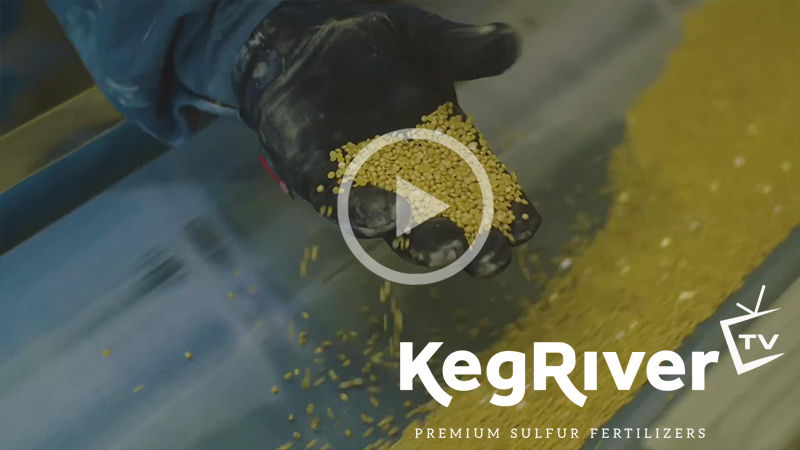Watch: What Is the Difference Between 85% & 90% Degradable Sulfur Products

Many growers, and even retailers, ask, “What is the difference between a 0-0-0-85 degradable bentonite sulfur fertilizer and 0-0-0-90 product?”
The 0-0-0-90 fertilizer is the most commonly used product. It contains 90% elemental sulfur and 10% bentonite clay. It has been around for nearly 50 years. The 0-0-0-85 contains 85% elemental sulfur and 15% bentonite clay.
You would think the one with the higher sulfur content would be of greater benefit to crops. The truth is, with 50% higher clay content – it is the 0-0-0-85 fertilizer that offers superior performance.
So why is this?
As Brooke Bateman describes in this video, Keg River was the first to introduce an 85% bentonite sulfur to the market in 1998. The decision was based on extensive research, indicating that the additional clay content would offer many advantages. It would provide enhanced degradability (and therefore, improved conversion to sulfate by microbes in the soil). It would also make for even safer and cleaner handling.
“From an agronomic perspective, our 90 (product) provides great economic value and performance. It’s tried and true,” Bateman said.
“But step up to our 85, and you get a more thorough breakdown and a faster conversion rate into plant-available sulfate.”
To demonstrate this, Bateman conducted a side-by-side degradability test of Keg90S™ and Keg85S™ (WATCH). He added 10 CCs of water to a 20-gram sample of Keg85S, and duplicated this with Keg90S. After 24-hours, he ran the degraded products through a series of mesh screens to determine the particle sizes.
“Keg85, on the other hand – at 76% in the 180-micron size range – really illustrates the benefit that comes from having 50% more clay content,” Bateman revealed.
According to Bateman, the extra clay content in a 0-0-0-85 bentonite sulfur also makes the pastille more durable, and even less prone to dusting during handling. He noted that their Keg85S pastille is 30% harder than their 90 product.
While an 85% bentonite sulfur fertilizer may cost a little more, there is a noticeable difference when it comes to handling and nutrient performance. Its why most growers and retailers rarely go back to an 90% product once they’ve seen an 85% bentonite sulfur fertilizer in action.
Click here to watch our video and see a degradability comparison.




